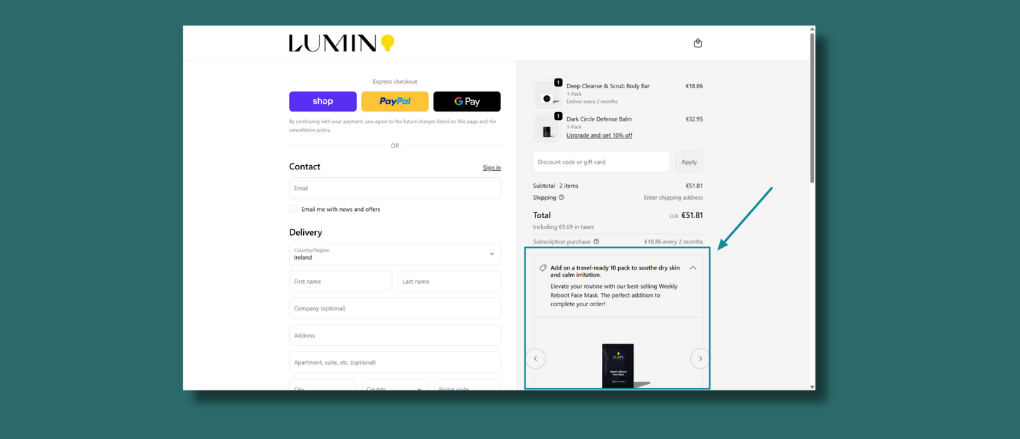12 Easy Tactics to Boost Shopify Sales (With Examples)
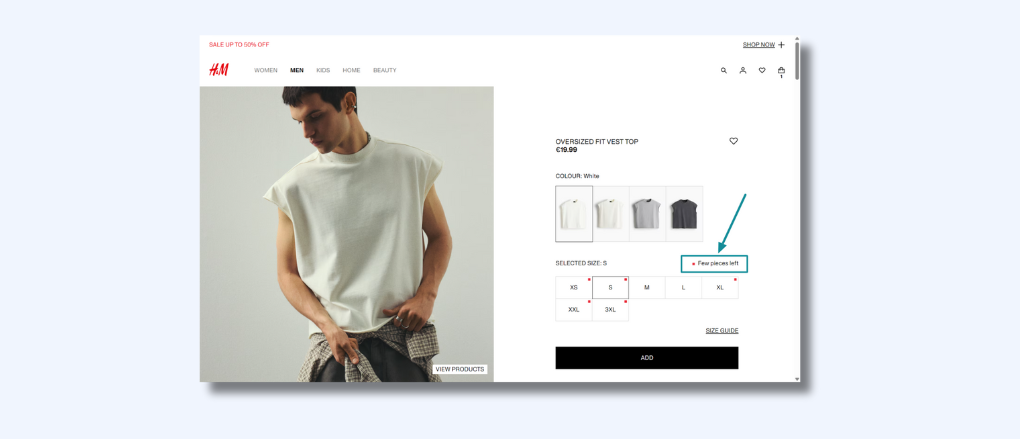
Did you know that the typical Shopify conversion rate is only 1-2% of your store's visitors buy something?
That means 98% of your traffic could be slipping through the cracks.
If you're only focused on getting more traffic, you're missing out. The real game-changer is getting more value from the traffic you already have.
In this guide, we'll break down 12 powerful tactics to boost Shopify sales fast - including strategies, examples, and the best apps to help you win.
Whether you're a store owner, CRO specialist, or an eCommerce agency partner, you'll walk away with proven moves that drive revenue.
Let's dive in.
8 Simple Tactics to Boost Shopify Sales
These 8 proven tactics will help you convert more visitors, increase average order value, and turn every sale into a growth opportunity - ultimately helping you to boost Shopify sales.
1. Master the Art of Post-Purchase Upsells
The moment after a customer completes checkout is one of the most powerful opportunities in eCommerce. Trust is high, momentum is strong, and wallets are open.
Post-purchase upsells let you add extra revenue without interrupting the original sale. That's why smart brands turn to tools like ReConvert, which makes it easy to add one-click upsell offers immediately after checkout.
For example, UK-based brand Olivia Jewelry added ReConvert to their Shopify store to test post-purchase upsells. The result? Over $130,000 in additional revenue from one-click offers and a massive ROI on their subscription.
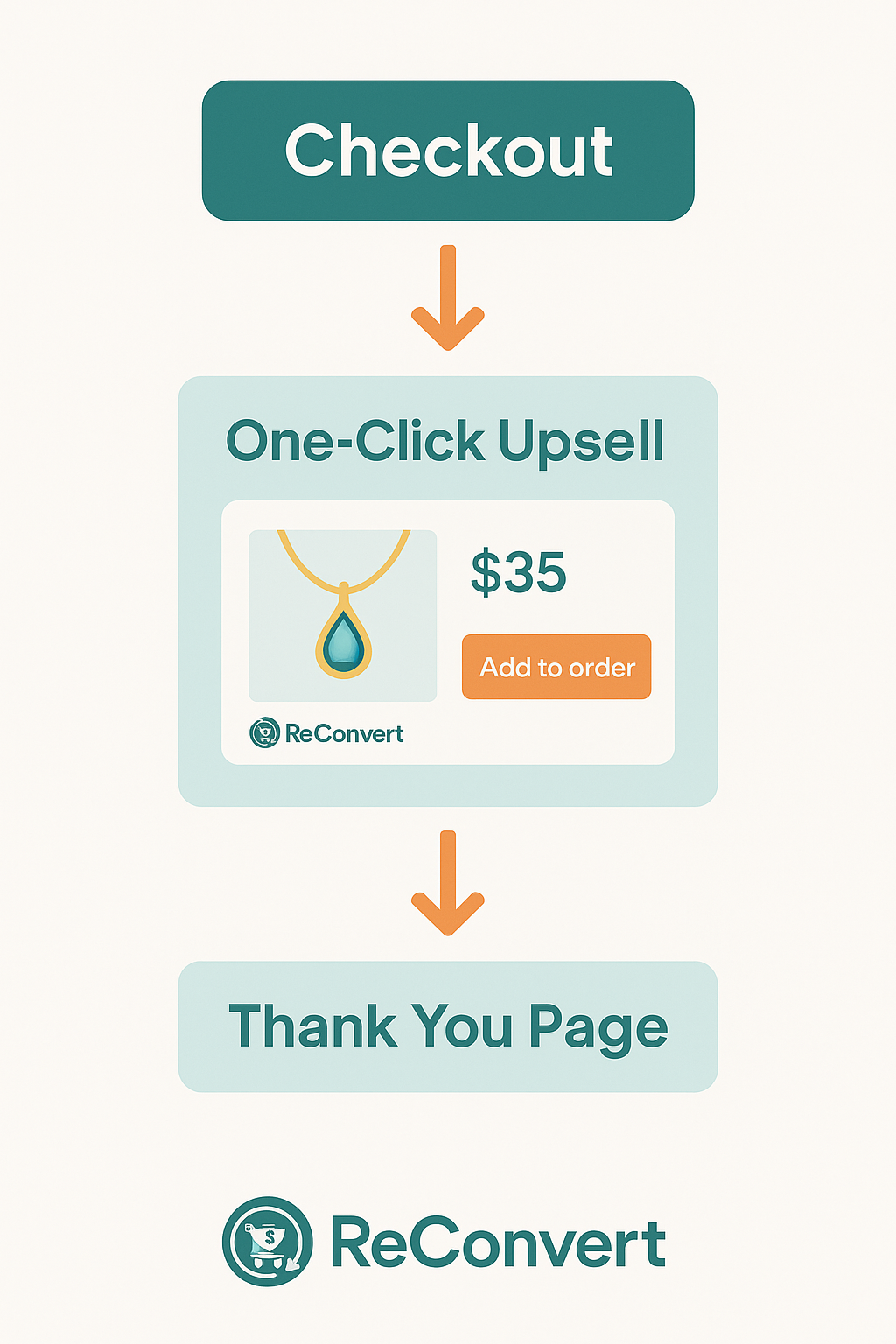
By offering personalized product suggestions immediately after checkout, Olivia Jewelry turned their thank you page into a revenue machine.
Why it works:
- Customers don't need to re-enter payment info
- Upsells are personalized based on order contents
- Conversion rates on post-purchase offers are 2x higher than pre-purchase upsells
2. Use Product Bundles to Raise Boost Shopify Sales
Bundling is a simple but powerful tactic to boost your average order value. Instead of selling items individually, you combine them into a curated set — making it easier for customers to buy more while feeling like they’re getting a deal.

Look at Fender. They don’t just sell electric guitars. They offer beginner-friendly bundles with a guitar, amp, strap, cable, picks, and gig bag - everything a new player needs to start. It’s more convenient for the buyer and more profitable for the brand.
Why it works:
- Drives higher AOV by combining multiple items into a single purchase
- Reduces friction for shoppers who don’t want to build their cart piece by piece
- Creates perceived value with bundled savings compared to buying separately
Bundling isn’t about pushing more products - it’s about packaging value in a way that helps the shopper and grows your revenue.
3. Add Exit-Intent Popups That Convert
Exit-intent popups are a smart way to save abandoned sales. When a visitor shows signs of leaving, a well-timed popup can bring them back with the right nudge.
These popups work because they interrupt indecision. Instead of losing the sale, you offer value, like a discount, a reminder, or social proof, right before they click away.
Pandora nails this with a clean exit popup that shows a product image, the message “375 people are viewing this item,” and a clear CTA: “Return to Checkout.” It’s subtle, stylish, and effective at re-engaging shoppers without being pushy.

Why it works:
- Stops bounce at the last second
- Adds urgency with real-time cues
- Recovers missed revenue
To add this to your Shopify store, try apps like Privy, OptiMonk, or Klaviyo Forms. Trigger it when users move to close the tab or go back, and keep the design simple with one strong message.
One small popup can bring back a lot of lost revenue.
4. Leverage Scarcity to Boost Shopify Sales
Scarcity is one of the most effective conversion drivers in eCommerce. When shoppers believe something might sell out or expire soon, they’re more likely to act fast.
H&M demonstrates this perfectly. On product pages, they display subtle “Few pieces left” messages next to limited-size options. It’s clean, unobtrusive, but powerful, creating just enough urgency to nudge a customer from “maybe later” to “buy now.”
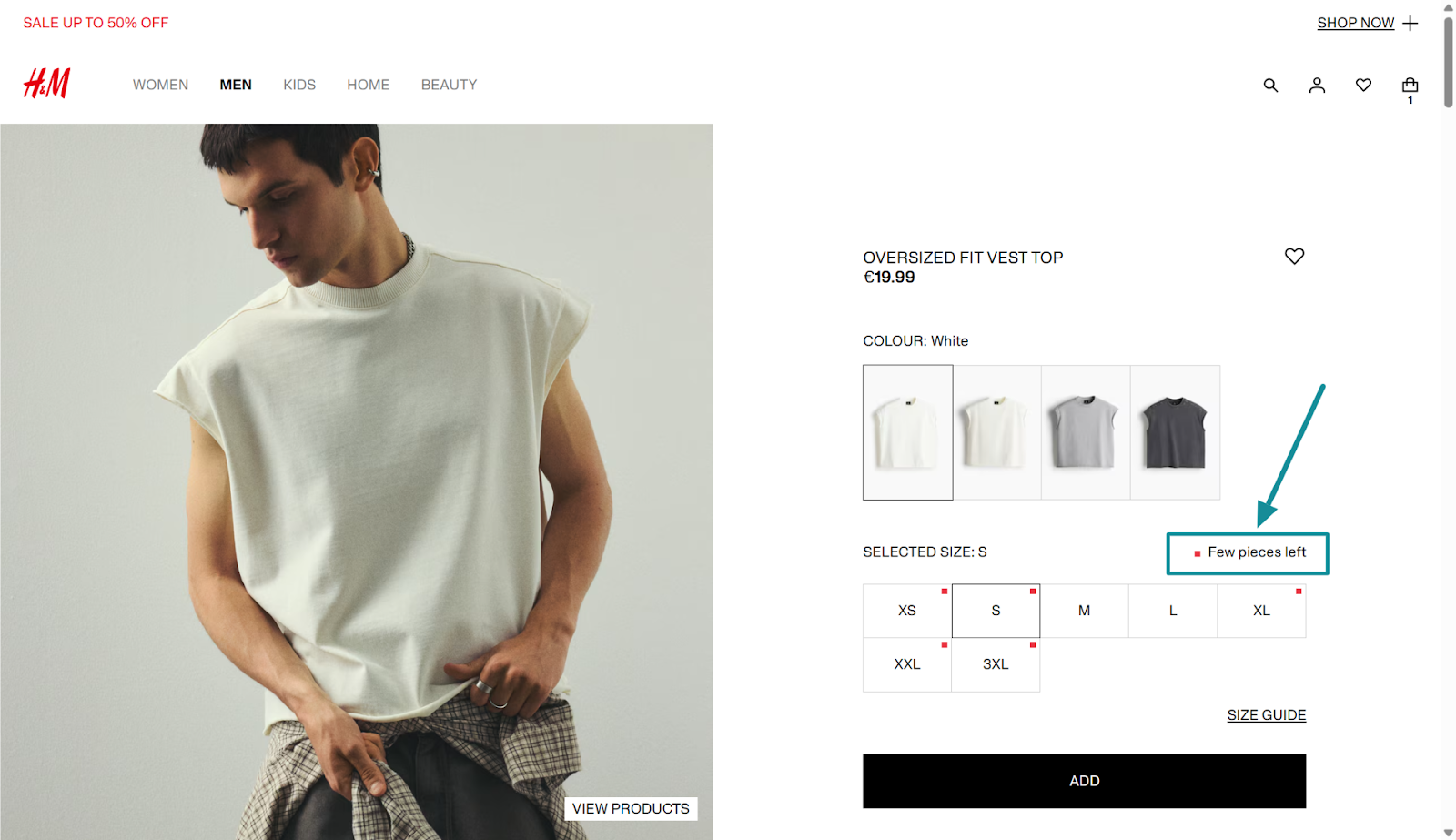
Why it works:
- Creates a time-sensitive reason to act
- Increases conversion without harming UX
- Works across product types and verticals
Keep the design subtle but visible. Scarcity shouldn’t feel manipulative - just real.
5. Add Social Proof That Builds Trust
People don’t trust marketing copy, they trust other people. That’s why social proof is such a powerful lever for boosting Shopify sales. It reduces hesitation, builds credibility, and gives shoppers the reassurance they need to hit "Buy Now."

One brand doing this beautifully is Chupi, a jewelry brand that prominently features glowing customer reviews across their site.
Each review includes the customer’s name, a 5-star rating, a thoughtful testimonial, and third-party badges from Google and Trustpilot. This isn’t just fluff. It’s a strategic way to build trust and create a sense of community around their products.
Social proof works best when it’s authentic and visible where buying decisions happen - like product pages, upsell offers, and thank you pages.
Why it works:
- Builds confidence with new customers
- Shows your product is already loved and trusted
- Reduces return risk by aligning expectations
When customers see others like them raving about your product, they’re far more likely to trust you too. Social proof isn’t just persuasive, it’s essential.
6. Boost Shopify Sales with an Abandoned Cart Email Sequence
Cart abandonment is a significant challenge for eCommerce businesses. However, a well-structured email sequence can help recover a substantial portion of these lost sales.
Implementing a three-part email flow like the one below can massively boost your recovery rate
Email 1: The Gentle Reminder
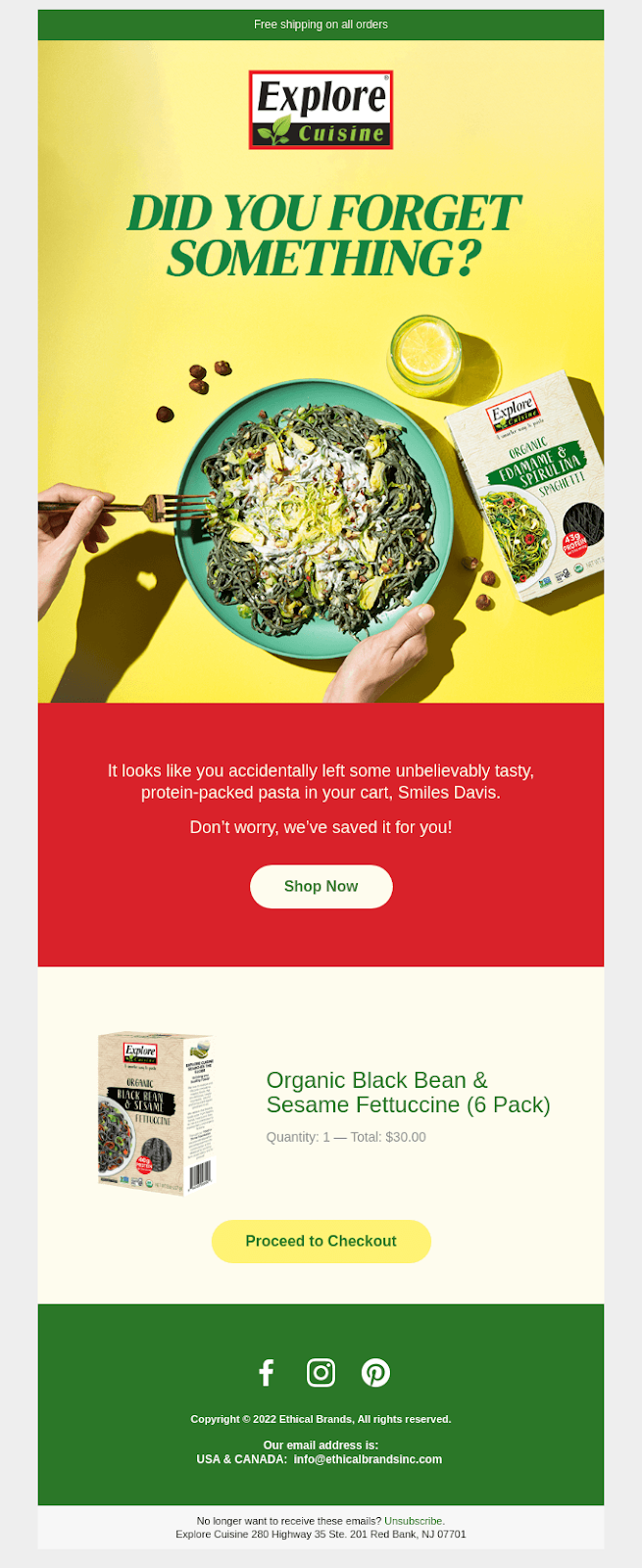
Send this email 30 minutes after cart abandonment. Its purpose is to remind customers of the items they left behind. Keep it straightforward:
- A clear subject line (e.g., "You left something behind")
- Product image(s)
- A single call-to-action (e.g., "Return to your cart")
- Contact information for customer support
Email 2: The Incentive
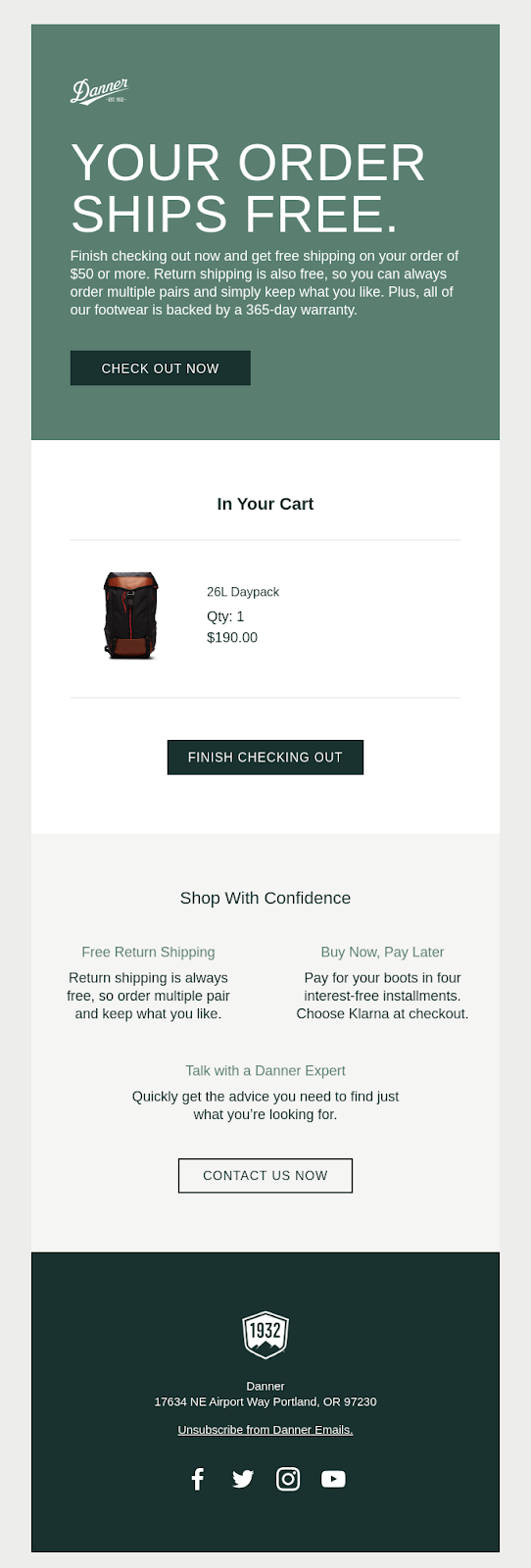
Dispatch this email 24 hours later. Offer an incentive to encourage completion of the purchase:
- A discount code (e.g., 10% off)
- Free shipping
- A free gift with purchase
Additionally, include customer testimonials or reviews to build trust and alleviate concerns.
Email 3: The Last Chance
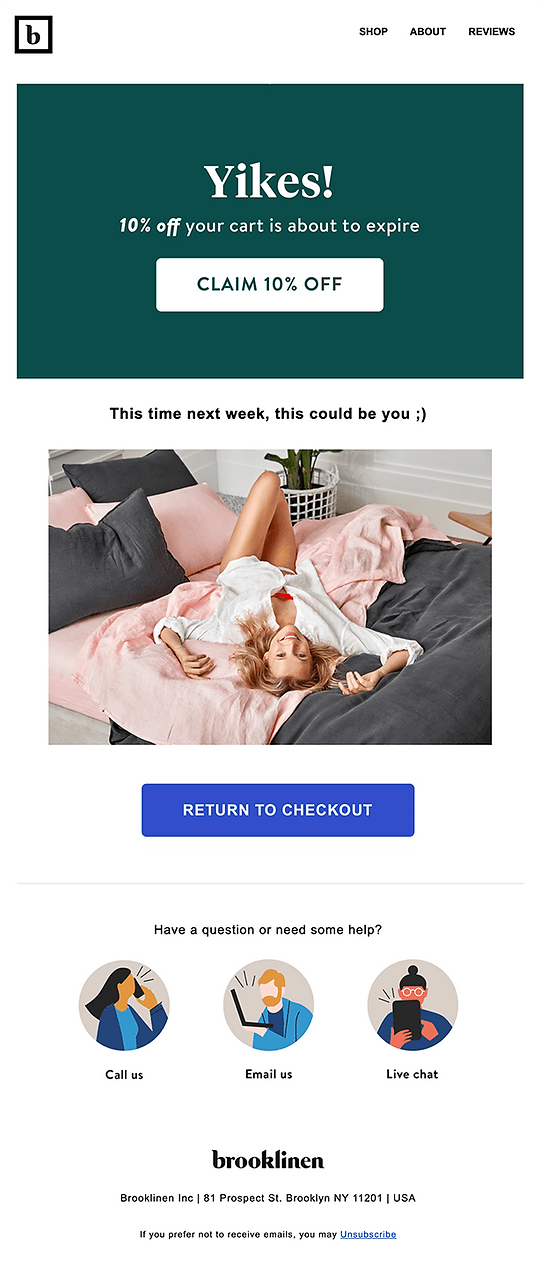
Send this final email 72 hours after abandonment. Create a sense of urgency:
- Highlight that the offer is expiring soon
- Emphasize limited stock availability
- Reinforce the benefits of the product
Best Practices:
- Subject Lines: Keep them concise and relevant to increase open rates.
- A/B Testing: Experiment with different offers, timings, and content to determine what resonates best with your audience.
- Multi-Channel Approach: Complement your email strategy with retargeting ads and SMS reminders to maximize reach and effectiveness.
By implementing this structured approach, you can effectively reduce cart abandonment rates and boost your store's revenue.
7. Turn Your Thank You Page Into a Revenue Channel
Most Shopify thank you pages are dead ends. The customer completes their order, gets a confirmation, and that's it. No follow-up, no offer, no upsell. That’s a missed opportunity.
With ReConvert, your thank you page becomes a dynamic sales engine - not just a receipt. You can add targeted upsells and cross-sells based on your customers order data.
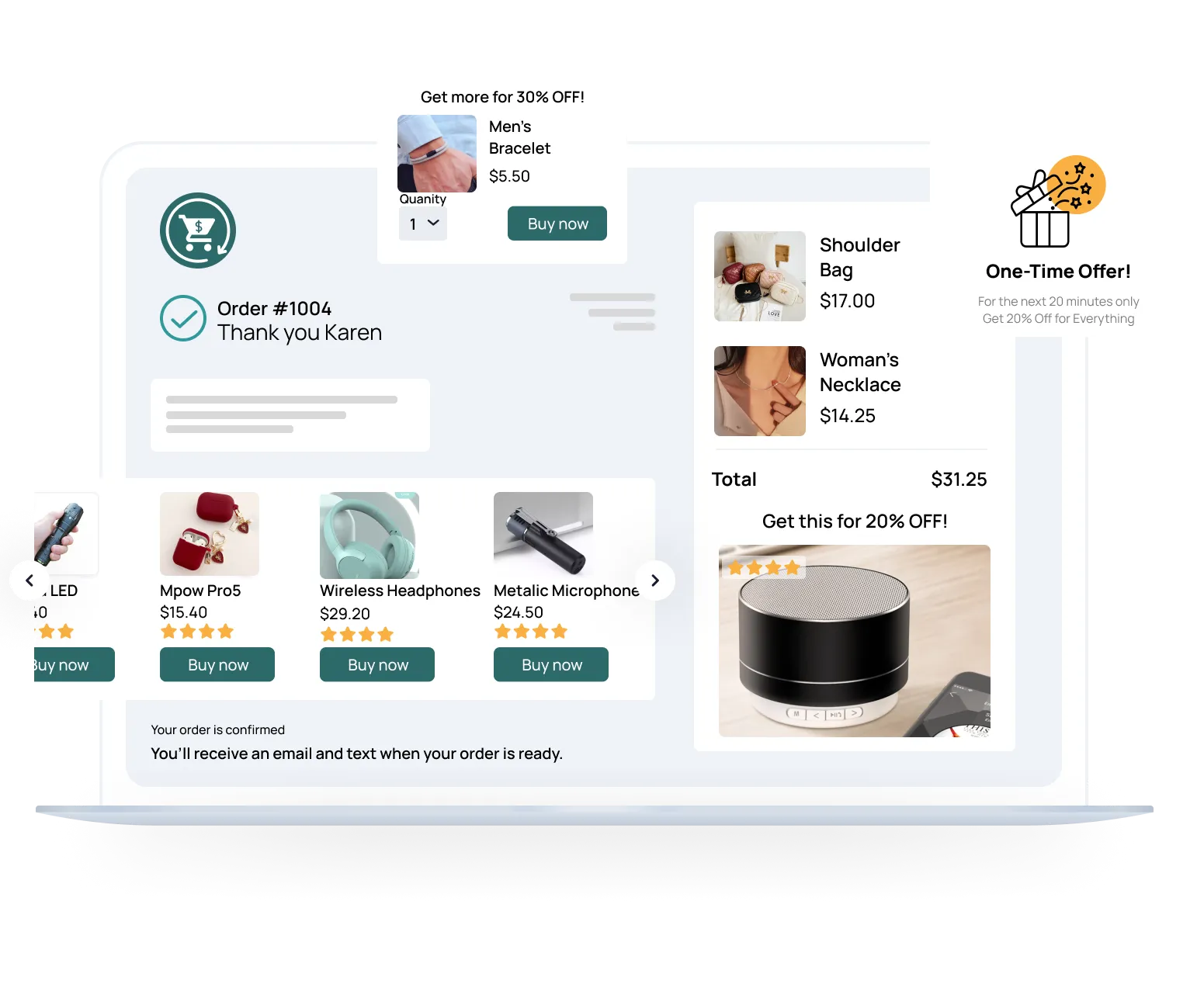
The beauty of the thank you page is that 100% of buyers see it. These are warm, high-intent customers who just made a purchase. They’re already in the buying mindset, so it’s the perfect time to present them with a relevant offer or next step.
Why it works:
- It doesn’t interrupt the initial sale
- Customers trust you more right after buying
- It gives buyers a reason to return sooner or spend more
Don’t let the thank you page be a dead end. With ReConvert, it becomes a second chance to grow AOV, increase LTV, and create a better post-purchase experience - all in one screen.
5 More Ways to Boost Shopify Sales
There’s no single silver bullet for growing your Shopify sales - but stacking small, smart CRO wins can drive big results. These next few tactics are all about optimizing your store experience to make it easier for shoppers to convert.
1. Use a ‘Broad & Shallow’ Navigation
Your navigation should guide shoppers, not confuse them. One of the most common issues on Shopify stores is overly complex menus with too many categories, too many layers, and no clear hierarchy.

Instead, aim for a broad, shallow structure - meaning more top-level categories and fewer sub-menus. For example, the athleisure brand Gymshark has 1000s of products, but their menu starts with just two categories: 'mens’ and ‘womens’.
Group products in intuitive ways like “Shop by Collection” or “Shop by Problem” so users instantly know where to click.
Then make it even easier with filters on collection pages (by size, color, price, etc.) and a search bar with auto-suggestions. These tools reduce friction and help people find what they want faster.
The easier you make it to browse, the faster people buy.
2. Incentivize New Customers
First-time visitors are the hardest to convert. They’re just getting to know your brand and often need a little extra push to make that first purchase. A simple incentive, like 10% off or a free gift with their first order, can tip the scale.
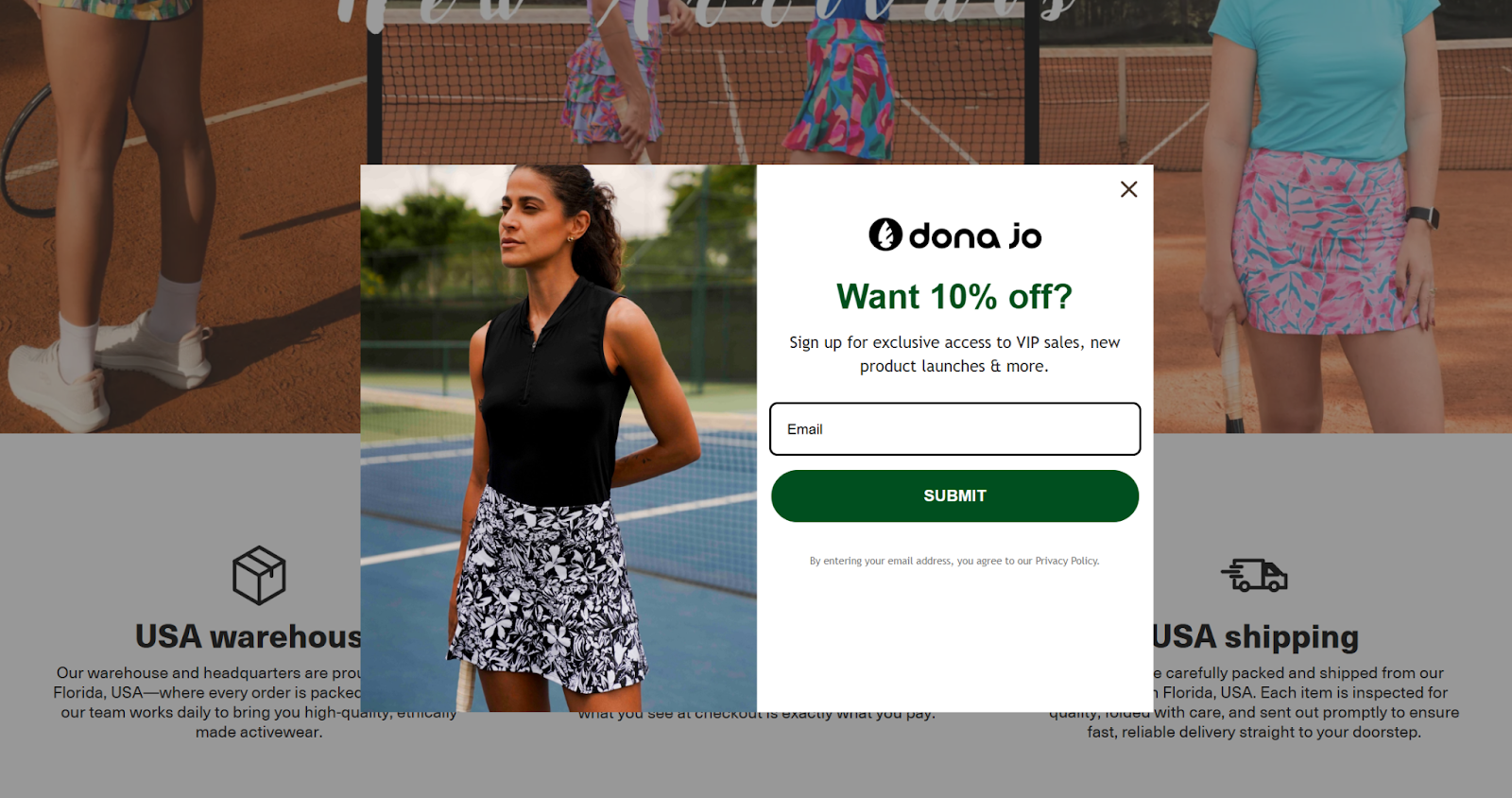
Activewear brand Dona Jo uses this tactic effectively with a clean welcome popup offering 10% off in exchange for an email sign-up. It’s simple, direct, and gives shoppers an immediate reason to engage.
To do this on your Shopify store:
- Use tools like Klaviyo, Privy, or Justuno to trigger popups after a few seconds or on scroll
- Keep the offer clear and the CTA bold
- Segment these customers for follow-up flows like welcome emails or first-time buyer upsells
An upfront offer builds goodwill, increases your chances of conversion, and grows your list for future marketing. Small perk, big return.
3. Remove “Return to Cart” Links
Every click away from checkout is a chance to lose a sale. One common culprit? The “Return to Cart” link. While it may seem helpful, it often distracts customers who are seconds away from converting.

Fresh Heritage, for example, still displays this link prominently on their checkout page. But here’s the problem — it invites hesitation. Customers may second-guess their cart, adjust items, or worse, abandon entirely.
As Yusuf Shurabaji, Co-Founder at CRO agency Prismfly, explains: “We've run AB tests, which took minutes to set up, including hiding the 'Return to cart' link in checkout since users can rely on their browser 'back' button or the breadcrumb.”
It’s a small change that protects the most important part of your funnel - checkout completion.
If you're using Shopify Plus or Checkout Extensibility, you can easily hide this element and keep buyers moving forward, not backward. Less friction, more conversions.
4. Offer Free Shipping
Free shipping is one of the most compelling motivators in eCommerce. Shoppers often abandon carts due to unexpected shipping fees, but a simple threshold - like “Free shipping on orders over $50” - can flip the script and actually increase cart size.
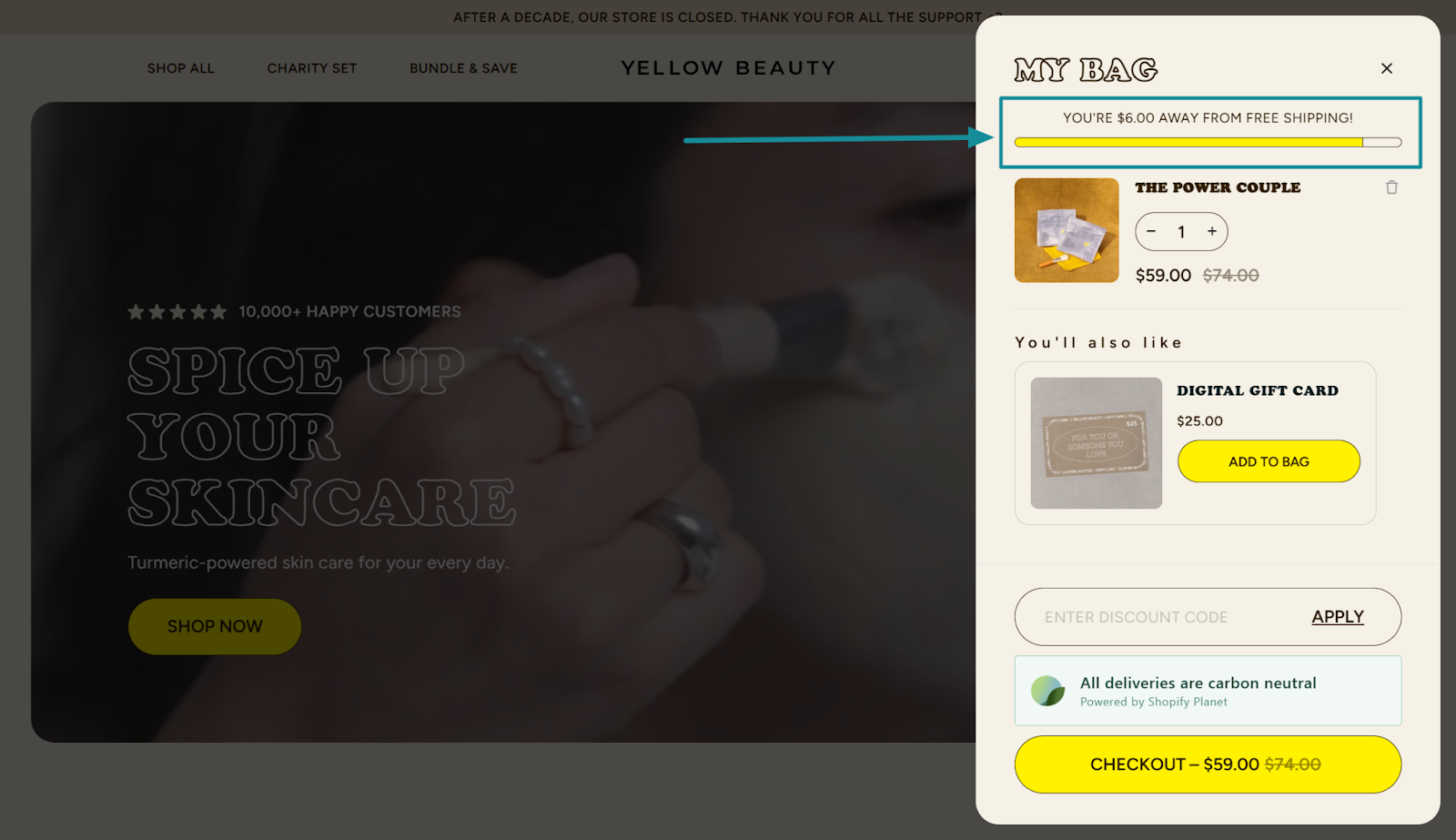
Yellow Beauty gets this right. When customers open their cart, a progress bar appears with a message like “You’re $6.00 away from free shipping.” This small detail nudges shoppers to add one more item to unlock the perk. It’s subtle, rewarding, and backed by buyer psychology.
To implement this in your Shopify store, use apps like Free Shipping Bar by Hextom or Shopify Cart Drawer enhancements to show real-time progress. Pair it with small accessory cross-sells to help shoppers reach the threshold with minimal friction.
Free shipping isn't a cost - it's a conversion booster.
5. Enable Guest Checkout
Forcing account creation before purchase is one of the fastest ways to lose a customer. First-time buyers don’t want to jump through hoops. They want to check out quickly, confidently, and with minimal friction.
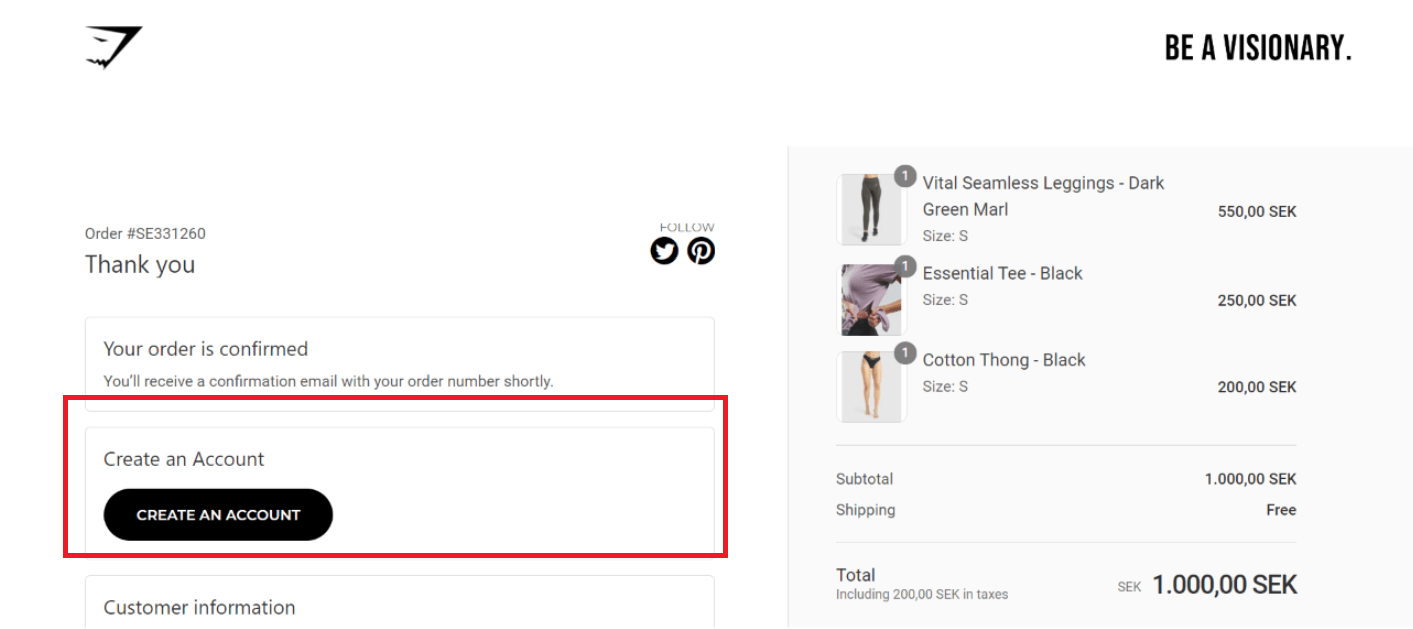
That’s why enabling guest checkout is a must. It removes unnecessary steps, reduces form fatigue, and improves conversion rates - especially on mobile.
But just because you skip account creation upfront doesn’t mean you lose the relationship. The smart move is to ask for account signup after the purchase, when trust is higher and the customer has already committed.
Why it works:
- Streamlines the path to purchase
Reduces cart abandonment from frustrated users - Lets you follow up with a timely, low-pressure account invite
To implement this, go to your Shopify Checkout settings and allow guest checkout as the default. Then, use your post-purchase email flow or thank you page to invite the customer to create an account - ideally with a perk like tracking access, points, or faster checkout next time.
It’s all about removing friction now and building loyalty later.
Boost Shopify Sales Today!
You don’t need more traffic to make more sales. You just need to make better use of the traffic you already have.
From optimizing your post-purchase funnel to tightening up your navigation, these strategies are all about removing friction, increasing value, and nudging your customers toward that next “yes.”
Here’s a quick recap of the top tactics:
- Use post-purchase upsells to grow AOV without interrupting the original sale
- Bundle complementary products to increase order size and simplify decisions
- Deploy exit-intent popups to recover abandoning visitors with smart offers
- Leverage urgency and scarcity to nudge faster action
- Show social proof where decisions happen to build trust fast
- Set up abandoned cart emails with clear structure and incentives
- Turn your thank you page into a second sale opportunity
- Simplify navigation to help shoppers find what they need faster
- Incentivize first-time buyers with a discount or gift
- Remove return-to-cart links to keep the focus on checkout completion
- Offer free shipping thresholds to increase average cart size
- Enable guest checkout to reduce friction, then build loyalty post-purchase
Small changes stack into serious gains. You don’t have to do it all at once - pick a few, implement them, and measure the impact.
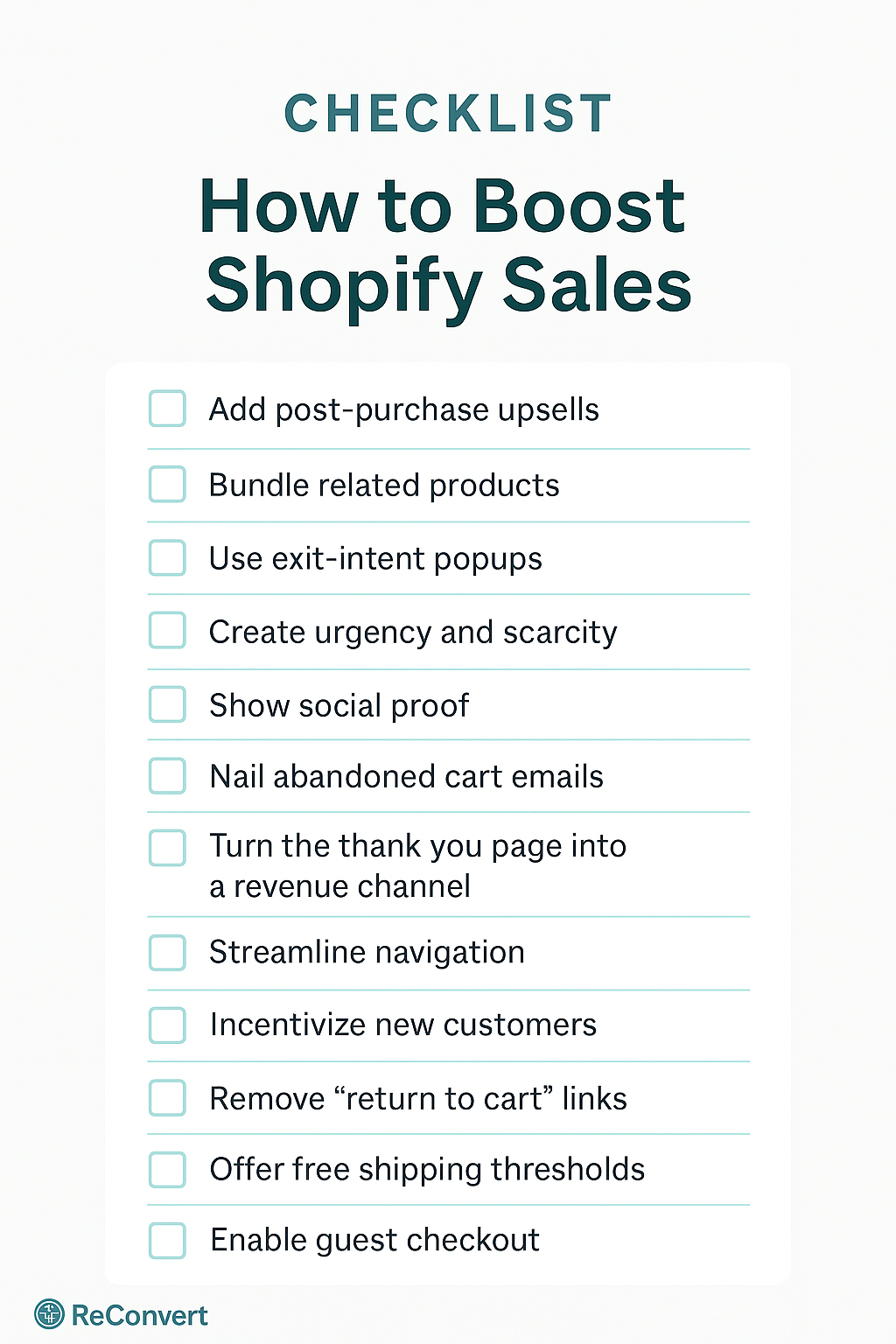
Boost Shopify Sales FAQ
Let’s quickly cover some of the most commonly asked questions related to boosting sales on Shopify
How can I boost my Shopify sales quickly?
Optimize your post-purchase experience and mobile UX. Use upsells, bundles, and urgency to increase AOV without relying on more traffic.
What are the best Shopify apps to boost sales?
Top apps include ReConvert (upsells), Klaviyo (email/SMS), Fera.ai (social proof), Bundler (bundling), and Yotpo (reviews/loyalty).
Do upsells really work on Shopify?
Yes, post-purchase upsells can increase AOV by 10–30% on average. They appear after checkout, so there’s no risk of interrupting the sale.
How do I increase my Shopify conversion rate?
Focus on speed, clarity, and removing friction. Use social proof, guest checkout, and a streamlined mobile experience.
Can ReConvert help new Shopify stores?
Absolutely. ReConvert is beginner-friendly, fast to set up, and optimized to deliver ROI from day one.





.jpg)

